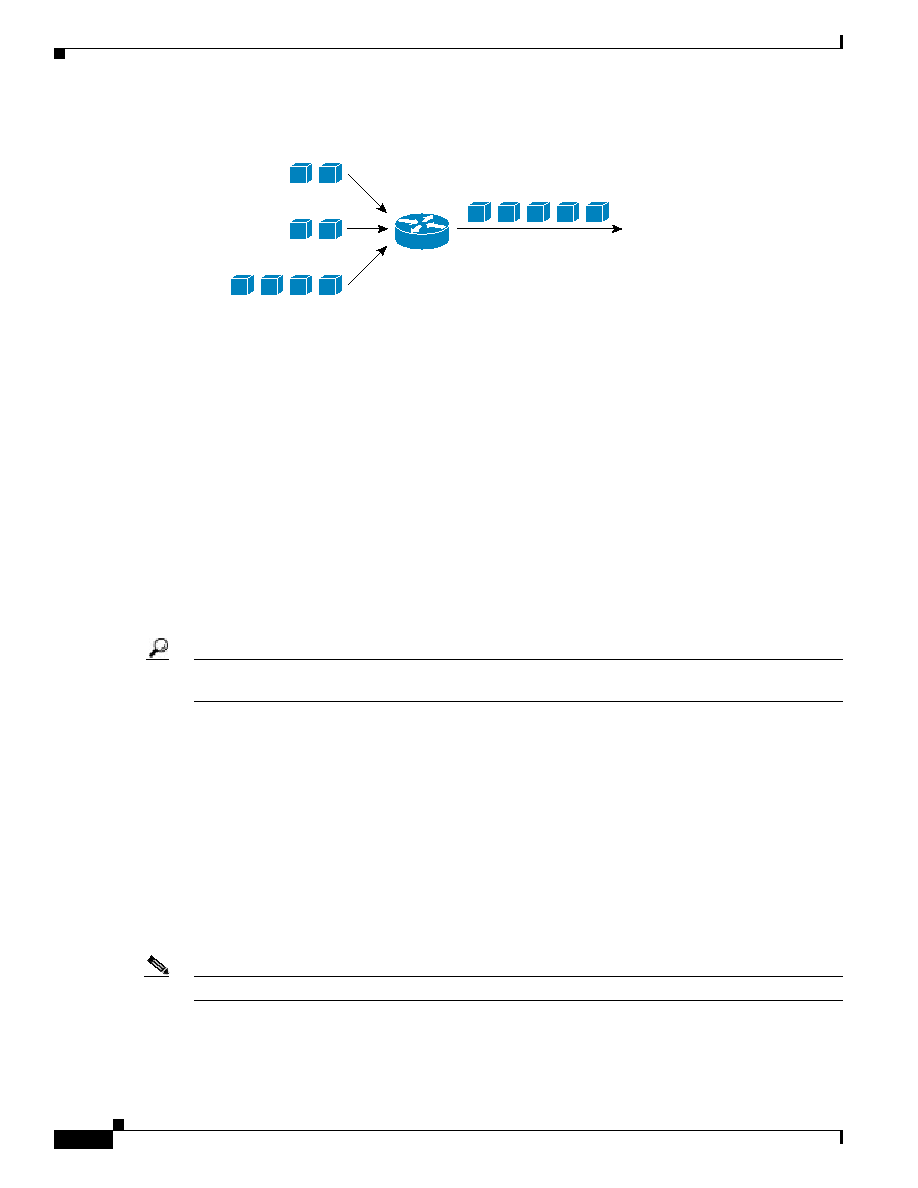
small opening. However, if water is continually entering the funnel much faster than it exits, then
eventually the funnel will being overflowing from the top. When queueing buffers begin overflowing,
packets may be dropped either as they arrive (tail-drop) or selectively before all buffers are filled.
Selective dropping of packets when the queues are filling is referred to as congestion avoidance.
Congestion avoidance mechanisms work best with TCP-based applications, as selective dropping of
packets causes the TCP windowing mechanisms to 'throttle-back' and adjust the rate of flows to
manageable rates.
manage the front of a queue, congestion avoidance mechanisms manage the tail of the queue. Therefore,
congestion avoidance mechanisms indirectly affect scheduling.
Configuration Guide, Release 12.2.
to guarantee bandwidth (from Custom Queueing) with the ability to dynamically ensure fairness to other
flows (from Weighted-Fair Queueing). CBWFQ allows for the creation of up to 64 classes of traffic,
each with its own reserved queue. Each queue is serviced in a Weighted-Round-Robin (WRR) fashion.
servicing to real-time applications, such as voice or video.
and Layer 2 overhead and keepalives), it is recommended that you not provision total bandwidth
guarantees to exceed 75% of the link's capacity (see